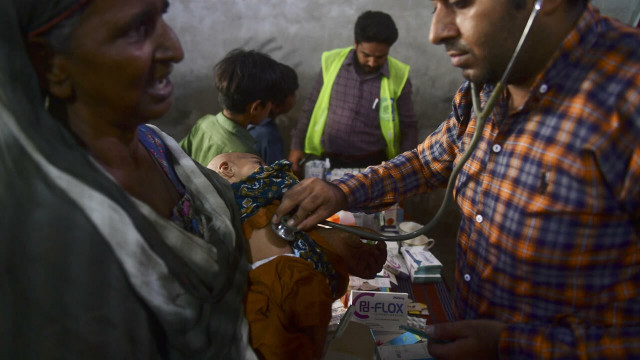Lahore:
Widespread monsoon rain and flooding over Punjab has triggered an increase in water and vector-borne diseases, with the health authorities warning of an escalating crisis.
In districts throughout the province, thousands of patients seek treatment of diseases related to stagnant flooding water, contaminated supplies and unhygienic conditions.
According to the official health record, more than 15,400 such patients with dengue fever, malaria, diarrhea, skin infections and other seasonal diseases have been recorded in the province of the last month.
In the last 24 hours, 150 new patients were registered across Punjab, highlighting the load on health facilities.
Dengue cases are increasing over the province, and the health experts have warned that the next two months will be crucial in this regard.
Dengue, transmitted by a mosquito that breeds in stagnant water, remains a growing concern. Over the past month, 114 Dengue patients have been confirmed in Punjab.
District data shows that Murree reported 23 patients, Rawalpindi 38 and Lahore 56, while smaller districts reported scattered cases. Punjab has registered 310 Dengue cases since the beginning of the current.
Health experts warned that with continuous rainfall and collection of water in urban centers, the risk of a wider outbreak is impending if preventive measures are not intensified. “Vector control and attention campaigns must remain a priority. Otherwise, we may face a wave that looks like former dengue epidemics,” said a senior health officer in Lahore.
Water -borne diseases such as diarrhea and typhoid have also shown a steep increase, especially among children in low -lying flood areas.
Overconnected relief, lack of clean drinking water and poor sanitation has worsened the spread of infections.
Malaria is also reported in significant numbers, with cases clinging in areas where flooding water remains stagnant. Skin diseases, including fungal infections and scabies, are often diagnosed among displaced populations that have little access to hygienic living conditions.
Animal bites adding the health burden. In the last month, 99 cases of Snake and 167 of dog bites were registered across Punjab. With villages immersed wild, wild snakes move into populated areas and increase the risk of toxic meetings.
In response to the growing crisis, Punjab -Health Authorities have established dozens of emergency medicine camps in affected districts.
Provincial Disease Surveillance System responsible for Dr. Shoaib Akmal, stated that the government closely monitored the situation and provided free treatment to all patients.
“All reported cases are controlled in a timely manner. Adequate stocks of anti-friendom and other drugs, and vaccines are available in medical camps and hospitals,” he claimed. “Our teams work around the clock to limit outbreaks and ensure no patient is untreated.”
He added that attention campaigns were launched in rural areas and urban areas of preventative steps, such as using mosquito fabrics, drinking boiled water and avoiding exposure to contaminated flooding water.
However, Public Health experts warned that the situation could be worsened if monsoon rain continued. The World Health Organization (WHO) and humanitarian groups have previously highlighted that outbreaks after flooding can often be more mere than the floods.
“Floodwaters destroy sanitation systems, mix wastewater with drinking water and give breeding grounds to mosquitoes. Unless immediate preventive steps are taken, Punjab may witness an exponential increase in dengue, malaria and waterborne diseases in the coming weeks,” warned an epidemiologist.
The authorities have encouraged citizens to drain stagnant water, store drinking water securely and seek medical help immediately in the event of a fever, vomiting or unusual symptoms.



